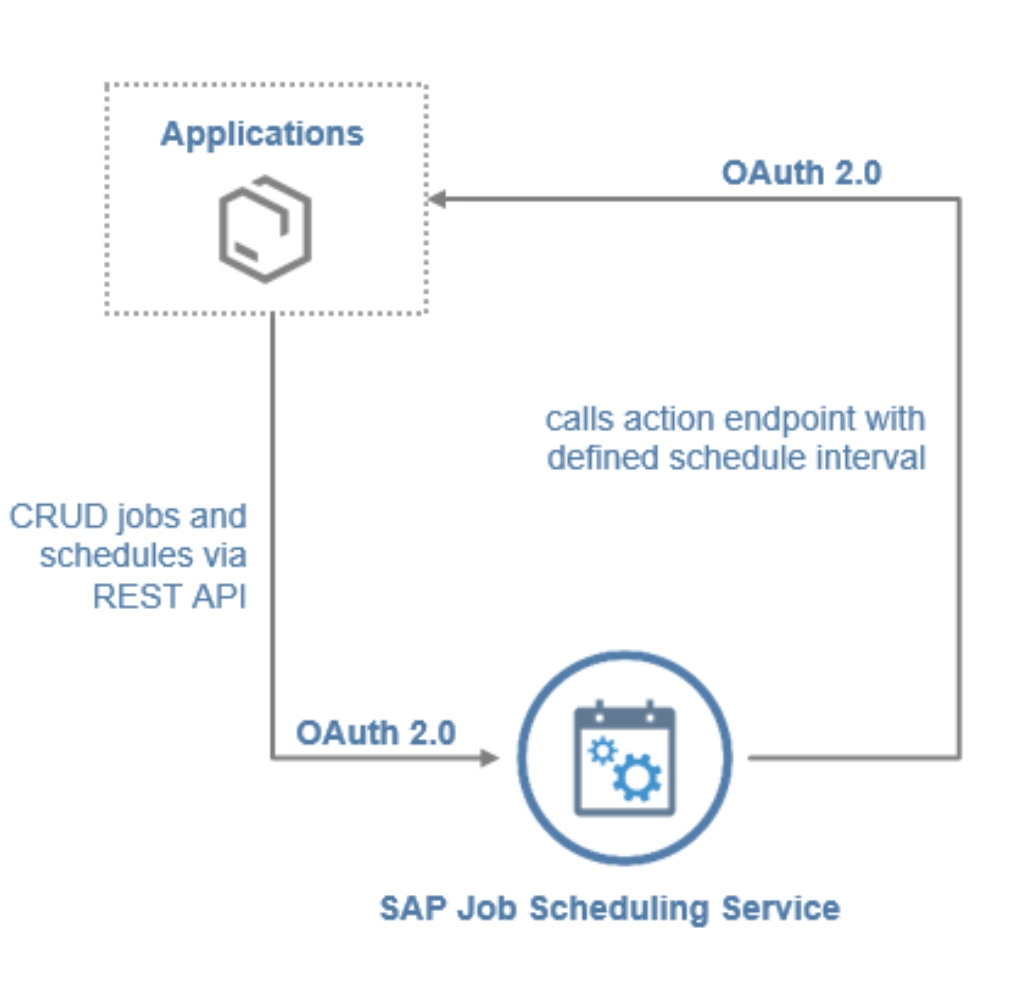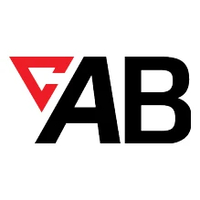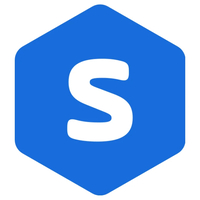We selected the SAP job scheduler alternatives based on the features, pricing, and market presence metrics of leading solutions.
| SAP Job Scheduler Alternatives | Best for | |
|---|---|---|
1. | Deep SAP integrations delivered as SaaS | |
2. | Hybrid cloud / API orchestration | |
3. | Cloud-native businesses that require less extensive SAP integration | |
4. | PowerShell integration and job scheduling management on the .NET framework | |
5. | Job orchestration in the IBM ecosystem | |
Alternatives to SAP’s Job Scheduler Service have grown in importance and sophistication, offering features that enhance integration, scheduling flexibility, and workflow management.
We explore each option in detail, highlighting their unique features and advantages and how they compare to SAP’s offering.
| Vendor | Rating* | Number of Reviews | Free Trial | Low-Code | SAP ECS Support |
|---|---|---|---|---|---|
| RunMyJobs by Redwood | 4.8 | 140 | ✅ | ✅ | ✅ |
| ActiveBatch | 4.4 | 251 | ✅ | ✅ | ❌ |
| Stonebranch | 4.8 | 79 | ✅ | ✅ | ❌ |
| Fortra’s JAMS | 4.7 | 142 | ✅ | ❌ | ❌ |
| IBM Workload Automation | 4.4 | 13 | ✅ | ❌ | ❌ |
SAP Job Scheduling Service Review
The SAP Job Scheduling Service, often called SAP Native Scheduler, is a feature within the SAP system that facilitates scheduling and automating various jobs within the SAP environment. (See Figure 1) These tasks include data backups, database updates, report generation, and other processes.
Figure 1: SAP Job Scheduling Service 1

Pros
- Integration with SAP Landscape: It is integrated with the SAP environment, providing operation with SAP applications and processes.
- Ease of Use: For SAP users, the native scheduler is familiar and easy to navigate, reducing the learning curve.
- Less expensive option: It comes as part of the SAP system, eliminating the need for external scheduling tools and associated costs, which are generally expensive. The pricing for the SAP Job Scheduling Service is $180 per 10,000 jobs 2
- Standard SAP Security and Auditing: It adheres to SAP’s security model, ensuring that job scheduling and execution are secure and compliant.
- Centralized Management: Allows for centralized management of jobs within the SAP system, facilitating easier monitoring and control.
Cons
- Dependency on SAP Environment: Being native to SAP, it cannot manage or schedule non-SAP processes, limiting its utility in heterogeneous IT environments. Therefore, users would need to rely on multiple tools to manage their workloads.
- Lack of Cross-System Capabilities: It is less suited for scenarios that require integration across different systems and platforms outside the SAP ecosystem.
- Limited Functionality: Compared to specialized scheduling tools, SAP Native Scheduler might have limited functionality in terms of complex scheduling needs.3
- Scalability Issues: For very large or complex landscapes, the SAP Native Scheduler might not scale as efficiently as specialized third-party tools.4
The choice between SAP Native Scheduler and other third-party scheduling tools often depends on the organization’s specific needs, the complexity of its IT environment, and the level of integration required with non-SAP systems.
Why Consider Alternatives?
The native SAP Scheduler, including SM36 for defining jobs, SM37 for monitoring them, SM38 for executing programs, SM39 for batch input monitoring, and SJOBREPO for job repository (See section “What is SAP’s Job Scheduler for more information), has limitations, as covered above. They might lack in areas like integration with non-SAP applications or advanced monitoring and reporting features that tools like ActiveBatch and Redwood RunMyJobs offer.
Alternatives to SAP Job Scheduler

RunMyJobs by Redwood
Best for SAP integrations delivered as SaaSRunMyJobs (RMJ) provides direct out-of-the-box integration with S/4HANA and SAP-certified integrations with RISE and SAP S/4HANA Cloud, allowing customers to keep their SAP core systems clean. Therefore, customers can manage automation tasks on RunMyJobs without tampering with their core system. This facilitates maintenance and updates of the SAP systems.
RunMyJobs is a SaaS product. Users can automate workloads without deploying specialized software for integrations. Redwood has been supporting SAP customers for more than two decades. For more information and key points regarding RunMyJobs and SAP, follow the link.
Check their offerings in the video below:

ActiveBatch by Redwood
Best for hybrid cloud / API orchestrationOne of the key features of ActiveBatch is its collaborative software development tools, which are adept at automating application deployment workflows. This is especially useful in complex IT environments that include both multi-cloud and on-premise systems. ActiveBatch provides a Super REST API Adapter, allowing you to match JSON responses to return variables.

Stonebranch UAC
Best for cloud-native businesses that require less extensive SAP integrationStonebranch allows users to integrate with various platforms or applications, offering pre-built integrations, options for custom development, or access to integration templates available on the community-supported Stonebranch Integration Hub. Stonebranch can also integrate with SAP services such as SAP S/4HANA.
Check their offerings below:

Fortra\'s JAMS
Best for PowerShell integration and job scheduling management on the .NET frameworkJAMS supports a range of platforms, including Windows, UNIX, Linux, IBM, and applications like SQL Server, Oracle, SAP. It utilizes PowerShell by leveraging the .NET framework. The JAMS module comprises over 50 cmdlets, enabling direct management, maintenance, and administration of JAMS via PowerShell.

IBM Workload Automation
Best forjob orchestration in the IBM ecosystem
IBM Workload Automation offers a scalable solution for scheduling and executing various jobs, tasks, cloud resources, and processes in distributed settings. IBM Workload Automation integrates predictive analytics to assess and forecast the time required for jobs along a critical path. It helps predict if essential jobs are at risk of missing a service level agreement and includes advanced what-if analysis capabilities.
What is SAP’s Job Scheduler Service?
SAP Job Scheduling Service is compromised of these modules:
SAP SM36 (Job Definition): This transaction is used in SAP to define or create batch jobs. It’s a part of SAP’s native job scheduling capabilities. Through SM36, users can specify when and how often a job should run, along with other parameters.
SAP SM37 (Job Monitoring): This transaction is used to monitor jobs that have been scheduled in SAP. It lets users view the status of jobs, whether they are running, completed, or have encountered errors.
SAP SM38 (Queue Maintenance): This transaction is less directly related to job scheduling but is important for managing queues, which can impact how jobs are processed and prioritized.
SAP SM39 (Job Analysis): This transaction is used to analyze batch jobs. It helps understand job performance and can be used to optimize the scheduling and execution of jobs.
SAP CPS (Central Process Scheduling by Redwood): This is an advanced job scheduling solution offered by SAP. It’s designed to integrate complex business processes across different systems and applications. CPS allows for more sophisticated scheduling options compared to SAP’s native job scheduler (SM36/SM37).
SAP BPA (Business Process Automation by Redwood): Similar to CPS, BPA is a solution provided by Redwood for automating and managing business processes. It’s another layer of sophistication over the standard SAP job scheduling. It is important to note that SAP will withdraw its support to SAP BPA by the end of 2024, so it becomes essential for businesses to consider alternatives.
SAP CCMS (Computing Center Management System): While not directly an enterprise job scheduler, CCMS is a monitoring and alerting system within SAP. It can be used to monitor background jobs and trigger alerts based on job outcomes or performance.
SAP’s native job scheduling capabilities (SM36/SM37) are fundamental for routine job scheduling tasks. They are straightforward and are typically used for standard batch job scheduling.
Tools like SAP CPA and BPA offer more sophisticated scheduling options, including cross-system integration and complex scheduling scenarios that go beyond the capabilities of the native scheduler.
Understanding SAP Scheduler and Its Limitations
SAP’s native scheduler includes tools like SAP CPS, SAP BPA, and various SM series (SM36, SM37, SM38, SM39). These tools are designed to automate and manage tasks within the SAP environment. While effective, they may lack advanced scheduling, cross-platform integration, or user-friendly interfaces, leading businesses to seek alternatives.
Top Criteria to Compare SAP Scheduler Alternatives
When evaluating alternatives to SAP Job Scheduling Service, consider the following criteria:
- Cross-platform support: Ability to schedule jobs across SAP and non-SAP environments.
- Cloud readiness: SaaS-based delivery with scalability and minimal infrastructure requirements.
- SAP-certified integrations: Support for S/4HANA, RISE, ECC, and NetWeaver.
- Workflow orchestration: Support for advanced job dependencies, alerts, and retries.
- Security and compliance: Adherence to audit requirements similar to SAP’s native tools.
- Ease of use: Modern UI, low-code/no-code interfaces for job configuration.
SAP BPA & SAP CPS FAQ
What is SAP BPA?
SAP Business Process Automation by Redwood is a solution designed to automate and optimize business processes across various SAP and non-SAP applications. It enables organizations to streamline operations, reduce manual tasks, and improve efficiency.
How does SAP BPA integrate with existing SAP systems?
SAP BPA seamlessly integrates with SAP systems, including SAP S/4HANA, SAP ECC, and other SAP solutions, leveraging existing business logic and processes. Integration is facilitated through standard APIs and connectors, ensuring a smooth and secure connection between systems.
Can SAP BPA automate non-SAP applications?
Yes, SAP BPA is designed to automate tasks across both SAP and non-SAP applications. It supports a wide range of applications through its extensive library of pre-built connectors and the ability to create custom integrations.
What is SAP CPS?
SAP Central Process Scheduling by Redwood is a solution designed to manage and automate complex scheduling tasks across SAP and non-SAP systems. It helps organizations optimize their business processes by ensuring timely and efficient execution of tasks.
How does SAP CPS integrate with SAP systems?
SAP CPS integrates seamlessly with various SAP systems, including SAP ERP, SAP S/4HANA, and SAP NetWeaver, among others. It utilizes SAP-specific connectors and APIs to facilitate smooth communication and task execution within the SAP ecosystem.
Are there training resources available for SAP CPS?
SAP provides a range of training resources for CPS, including e-learning modules, instructor-led courses, and workshops. These resources are designed to help users and administrators effectively manage and optimize their scheduling processes with CPS.
SAP Utilities
SAP job scheduler can be useful to manage utility asset, automate SAP meter to cash process and optimize advanced metering infrastructure. There are other solutions that can be combined with other tools, such as:
– SAP utility solutions
– AI in utilities
– RPA in utilities
– Customer information system utilities
– Smart grid solutions






Comments
Your email address will not be published. All fields are required.